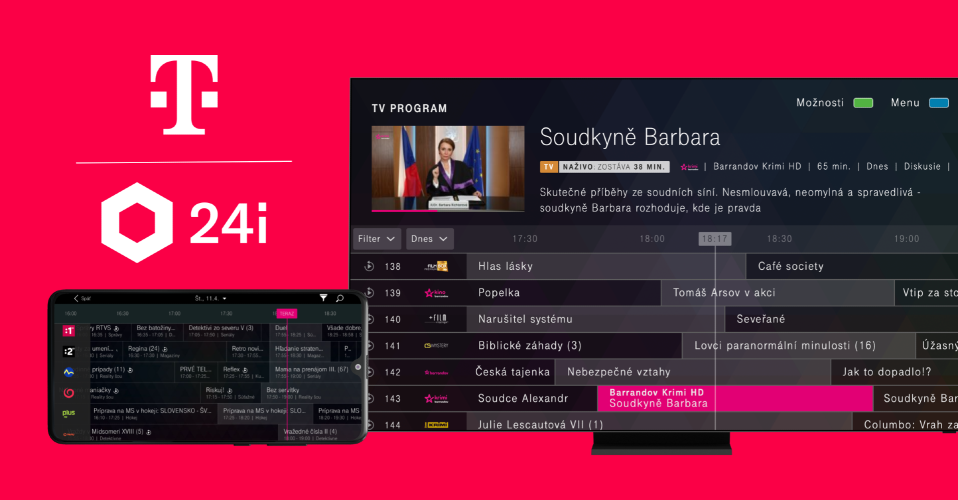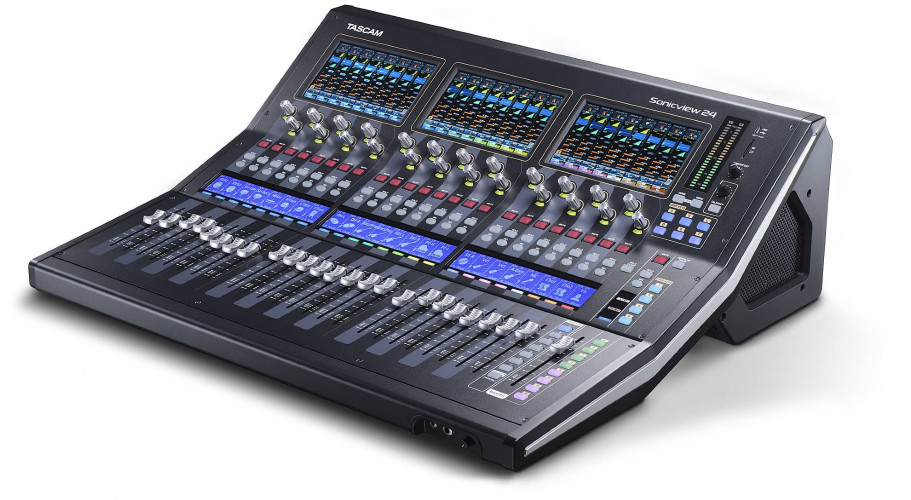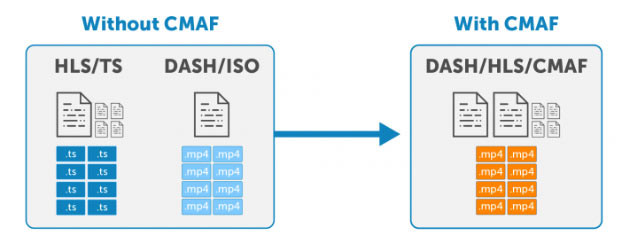2wcoms new products to ease the everyday tasks and challenges of audio broadcast systems
IBC 2018 - 2wcom's new product range is characterized by a completely new technical concept, which offers a wide range of features and opportunities to ease the daily work as well as the increasingly cross-media tasks. Of course, the well-known and proven product range for Audio over IP, SAT, DAB, FM/RDS and MPX over IP is also on stage. 2wcom is this year in hall 8 booth 8.E78.
2wcom’s versatile one-stop-solution for Audio over IP networks
The upcoming state-of-the-art product line is based on the know-how and experience of MM01, MM08E as well as customer requirements. All solutions are designed for studio to studio as well as studio to transmitter links and even for the increasingly widespread cross-media working method.
The MM04C codec (4 channels) and the MoIN Server (up to 512 channels) offer high compatibility to all interfaces and support a wide range of protocols for streaming, control and status (e.g. EBU TECH 3326, AES67, Ravenna, Livewire+, Dante, SMPTE ST 2110, SRT, PTPv2, RTSP, SAP, SIP, Discovery, Bonjour, SNMP, HTTP, HTTPS, FTP, FTPS or Ember+ and more). Furthermore, the exchange of additional information like GPIO and ancillary data between the audio networks is possible. The Reliable User Datagram Protocol (RUDP) ensures a reliable packet delivery even during very high packet loss rates and protects equally against random packet losses as well as burst packet losses. It even requires less bandwidth and shorter delays than conventional Forward Error Correction mechanisms (Note: needs a duplex IP link and uses Unicast/Multiple Unicast). Another advantage of both products is the wide range of possible algorithms (all MPEG layers, all AAC profiles e.g. extended HE xHE, OPUS, OGG Vorbis, Enhanced aptX, E-AC3, AC3 or PCM and many more). In addition, audio streams can be combined to multichannel streams.
To simplify day-to-day operation all features and applications are very cost-efficient modularly configurable, conveniently integrable into existing systems (even third party applications) and the Easy2connect feature allows operators as well as reporters in the field an uncomplicated connection establishment (SIP phonebook). An easy-to-use web-interface allows remote management, configuration and control of both the server and the codec fleet.
Both solutions have unique features. The MM04C codec as a classic 19'' unit can also be used as an FM rebroadcast receiver.
In comparison, the MoIN server can be operated as a software service and offers some sophisticated special functions such as audio routing, management, leveling, loudness, monitoring and mixing between different protocols and environments. The server can replace audio mixing consoles and process all audio signals (also based on different clocks). It is also possible to route or mix different audio channels synchronously between different networks.
4FM is the new modular solution for FM and Audio over IP applications
2wcoms full featured, comprehensive FM/RDS and analog/digital MPX over IP product line is undergoing a monumental change. The 4FM will replace all existing established products like C02 RDS encoder, S02 stereo generator or the analog/digital MPX over IP codec. This new solution offer technicians and decision makers a modular, cost-efficient and scalable concept in just one 19’’ 1HU rack unit.
Very comfortably, the activation of all components is purely software based. In conclusion, this means technicians are able to configure a device fitting absolutely to their needs on-site, saving costs and rack space. For example, it is possible to combine a RDS2 encoder, a stereo generator and an analog/digital MPX over IP codec in one device. In case the RDS encoder and the stereo generator are not needed, you can simply select the MPX over IP codec component. Furthermore, future upgrades can be done easily by software activation without any changes to the hardware necessary.
In comparison to the well-known former solutions of 2wcom, the 4FM provides a variety of sophisticated new features like the following: The device is equipped with inputs for analog/digital MPX, analog audio, AES/EBU and Audio over IP. As a result, the stereo generator now also supports protocols for Audio over IP streaming, control and status (e.g. EBU TECH 3326, AES67, Ravenna, Livewire+, SMPTE ST 2110, PTPv2, SNMP, HTTP/s, FTP or FTPS ). In addition, it is possible to add local RDS data to a MPX signal, that was already assembled in a main studio. The integrated FM tuner provides the opportunity of monitoring audio and RDS signals and in addition even rebroadcasting is possible. Furthermore, the device offers also the option to forward both the MPX signal and the pilot via IP.
2wcom’s FlexNsert+ and FlexXtract+ provide well-tried opportunities for DAB
Both devices are already in operation by national radio stations in Norway, Germany and the Netherlands. Integrated into the DAB/DAB+ transmission chain, 2wcoms solution allows broadcasters not only to use existing legacy (ETI) but also new IP-capable transmitters (EDI).
To serve remote, inaccessible and rural regions that are difficult to access via IP/cable, it is possible to distribute the DAB+ signal in parallel over IP and SAT. Synchronous play-out is possible due to the time stamp contained in the DAB+ signal. The transmitter then synchronizes it with a 1pps signal. For this use case it is absolutely mandatory that the 1pps signal is always before the time stamp for play-out. This can be achieved by an appropriate buffer setting at the multiplexer.
Furthermore, both devices can also be used as a complete DAB over SAT backup to ensure signal distribution in case the standard DAB transmission is interrupted.
At the uplink site the FlexNsert+ DAB+ distribution inserter receives a DAB ETI data stream (according to EN 300799), converts it into a standard MPEG2-TS-signal and finally outputs the signal via its transport stream interfaces (IP and ASI). In addition, activating 2wcoms function “FlexOptimized Bandwidth Saving Technology” enables system operators to save up to 45% of bandwidth.
At the downlink site, FlexXtract+ Distribution Extractor demodulates incoming EDI data via IP, ASI (MPE) or DVB-S/S2 (MPE or GSE). In the following we describe the three central play-out scenarios:
· If EDI-enabled transmitters are used, the EDI IP stream (according to TS 102 693) is simply forwarded directly to them.
In case old transmitters are operated, the incoming DAB data stream (EDI) is converted into a standard ETI signal (according to EN 300799).
· If broadcasters operate a mixed transmitter park, the FlexXtraxt can not only output the ETI signal received from FlexNsert directly to old transmitters (ETI), but can also convert it into an EDI stream in parallel to serve new transmitters. This ensures maximum flexibility and economy.




































